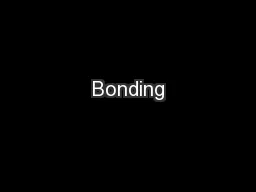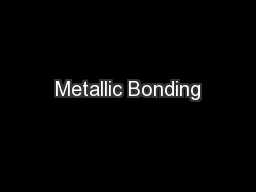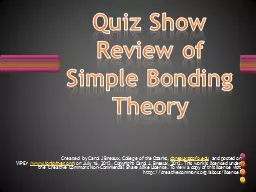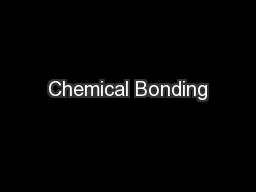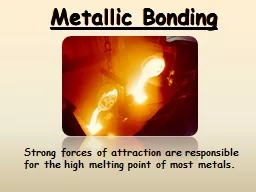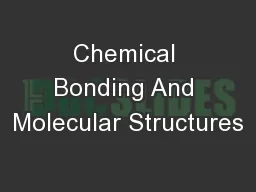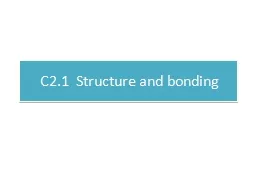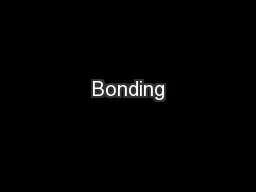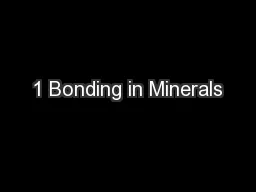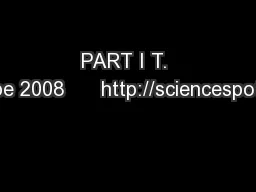PPT-Electrons and chemical bonding
Author : lindy-dunigan | Published Date : 2018-12-11
Bell work for November 25 2018 DirectionsMany Scientific words such as bond also have everyday meanings Use context clues to write your own definition for each
Presentation Embed Code
Download Presentation
Download Presentation The PPT/PDF document "Electrons and chemical bonding" is the property of its rightful owner. Permission is granted to download and print the materials on this website for personal, non-commercial use only, and to display it on your personal computer provided you do not modify the materials and that you retain all copyright notices contained in the materials. By downloading content from our website, you accept the terms of this agreement.
Electrons and chemical bonding: Transcript
Download Rules Of Document
"Electrons and chemical bonding"The content belongs to its owner. You may download and print it for personal use, without modification, and keep all copyright notices. By downloading, you agree to these terms.
Related Documents


